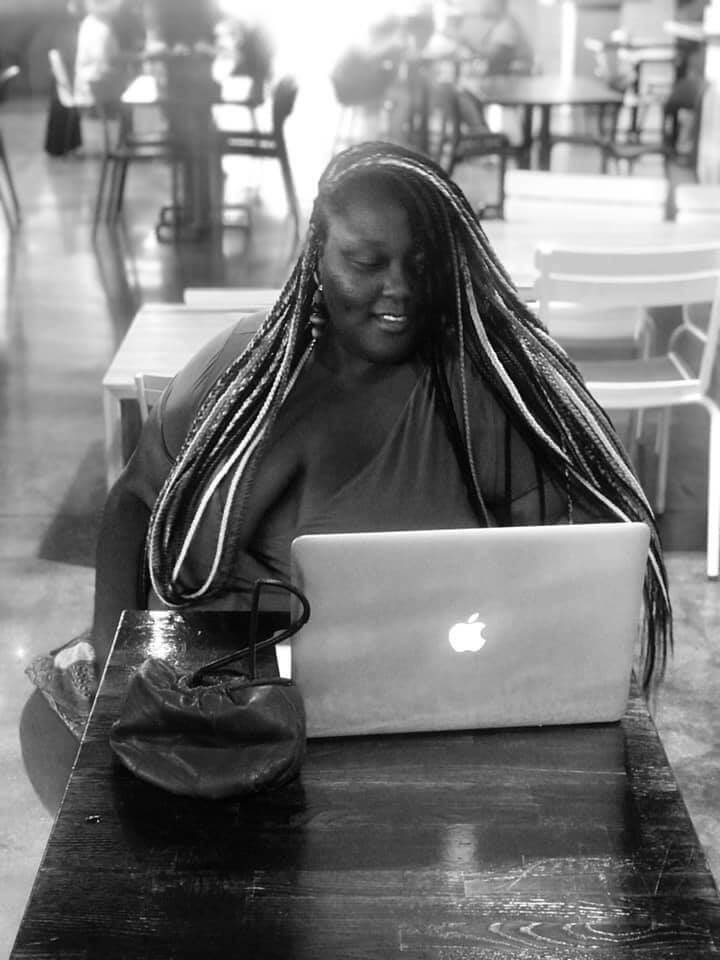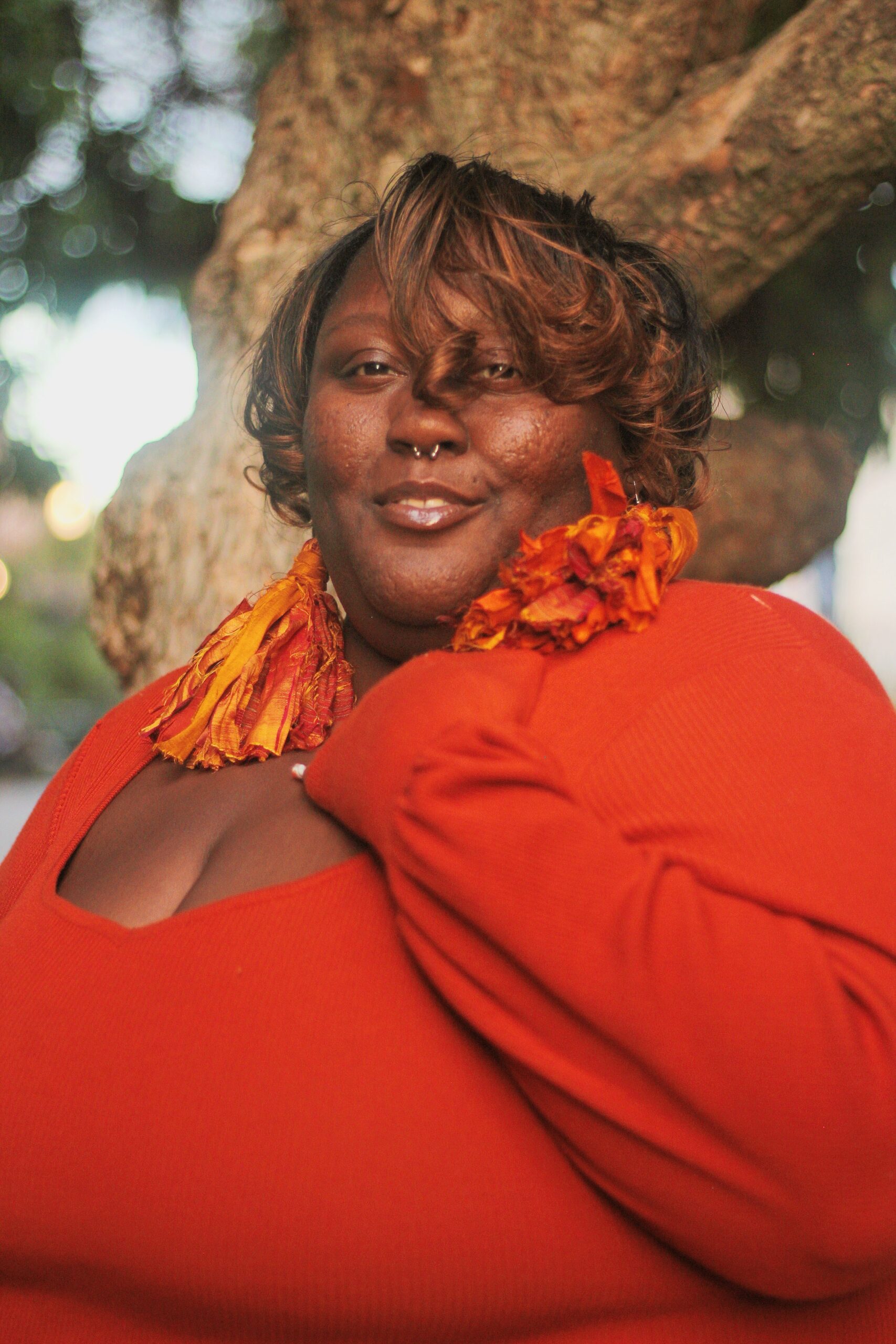Alanah Davis: Venus of Baltimore — Colorism and Sizeism at Her Feet

This morning I danced through my kitchen and took selfies celebrating everything about me — this is a common practice of mine.
I spent the day in good spirits from my self-loving morning dance until I went to my friend’s house for a socially distanced hang and was met with my sometimes daily offering of colorism and sizeism — which are both forms of oppression. After a few glasses of wine, we were joined by two Black men, both friends of hers and lite associates of mine — I didn’t know they were coming. Both of them are nearly or over six-feet tall, one huskier and darker skinned and one lighter-skinned and less husky.
I’ve had my run-ins in with both these characters in our social circles and didn’t necessarily care for one because of his overt and sometimes pushy attraction to my friend and inherent disregard for me, which you’ll learn of later. You can’t see me but I stand at just about five foot four inches tall, my hair is a tightly coiled brown bush, my skin is a rich dark brown color reminiscent of my Afro-Caribbean ancestors, my belly, arms, and legs are full.
In laymen’s terms, I’m fat and dark-skinned, more akin in size to Venus of Willendorf than Venus de Milo. My friend is a much lighter-skinned, with long hair, a small-framed woman of Afro-Latinx descent.
Ever since I was a teenager in Randallstown and Owings Mills, I’d spend evenings with my similarly lighter-skinned and smaller-waisted friends and others as they were courted by young Black men from the nearby city and county schools. If ever there were a pursuit for my time, heart, or plumper hand it was in secret, it still is.
My first experiences with dating surround themes of going to early movies so as not to run into anyone, not speaking to the guy I was dating in school or even hiding entire relationships from the public to cloak a man’s interest or desire for me. I don’t have pictures of myself and early boyfriends, or some later ones, either. My friends who fit a description like my aforementioned friend do have memorabilia of much closer and public relationships with Black men.
Because of my experiences, I always prep myself when hanging out with Black men for an undo implicit exclusionary or overly platonic tone meant to say they are not interested in me romantically. That tone held true that night after the four of us — my friend, myself and the two Black men — had been talking for some time. The guy who was attracted to my friend began to randomly beckon that she call another friend over to her house. My friend named a woman we all know mutually. His friend affirmed the demand by saying, “Yeah, that’s my type.”
At that moment they may as well have thrown me off of the front step into a puddle. I had endured an oftentimes less than intelligible conversation for a few hours at that point and that blatant measure of my erasure to a woman I know is a lighter skin tone and has a smaller waist brought me back to my confusing dating life as a younger woman. I used to wonder why I was of no public interest or why I wasn’t the ideal romantic type for these young Black men who oftentimes looked like or had mothers, aunties, or cousins who looked just like me in size and skin tone. I knew that I was extremely beautiful and smart, so what was it?!
It was in these early phases of my life that I, unfortunately, familiarized myself with both colorism and sizeism; those isms still follow me closely, as does their history. With my curiosity piqued again at nearly 30, I began to re-familiarize myself with the clear bias between my smaller bodied and lighter-skinned friends and myself.
With regard to skin color, I was quickly met with details of “The Brown Paper Bag Test,” where many churches, fraternities, and nightclubs used a brown paper bag as a standard test for entrance. Black people at these establishments would take a brown paper bag and hold it against a person’s skin. If a person was lighter than the bag, they were admitted. If they were darker, they were not. I would not have been admitted.
This kind of test was used as recently as the 1950s, which as a reminder was only reaching toward 70 years ago, just a few generations away. This oppressive practice is barely alone in its abrasive nature alongside other symptoms of what I’ve come to know as internalized racism.
After years of being victimized by chattel slavery its various antecedents and oppressive mental states for Black people therein, we’ve developed and adopted ideas, beliefs, actions, and behaviors that support or cooperate with racism. The standards for what is appropriate or normal in Black communities are very close to what white people’s standards of us were during chattel slavery and well after. Lighter-skinned slaves were given the privilege of higher occupational status, literacy, better clothing, or even freedom. Scholars have done the work to trace those social outcomes to present-day skin-tone stratification like what I experience as a darker-skinned Black woman in 2020.
Just like my experience at my friend’s house this year and yesteryear I’m usually stuffed into a category as being angry or less than ethically pleasing to the sight or folly of men cross-culturally. This is not a coincidence nor does it have anything to do with my actually being less attractive (I am extremely beautiful). It has everything to do with a very occluded and self-hating intra-cultural problem given to us inherently by white people.
This brings me to the Mammy archetype, a white male slave owner-created caricature that contained very little of the truth. Anti-abolitionists created Mammy very purposefully during the antebellum period to be a larger dark-skinned woman (like me) who held various make-believe attributes like her being desexualized. Abolitionists believed that one of the more brutal attributes of slavery was the sexual exploitation of women and Mammy was supposed to thwart claims by abolitionists that Black women of all colors were being brutalized and raped; we know this is a true claim. Mammy, though she was not real, was an attempt to say Black women were not attractive.
The contradictory Jezebel stereotype was also created by white people and given the characteristic of having an insatiable sexual appetite. They created her to constitute that though slaves were property and couldn’t legally be raped, black women wanted to take part in the act anyway. This is untrue. The way Black women are portrayed is all very sordid and very deeply rooted in a toxic history throughout our modern world in corporate America, media, collegiate experiences and especially dating culture, if you ask me.
While personal preference is absolutely at play in living rooms like my friend’s house the other day, there is absolutely the internalized poor ethics of the brown paper bag test and practices like it, the secrecy of an attraction to darker skinned, larger black women that the antebellum South and its slave owners have given us, as with its imaginary archetypes and…well hundreds of years of oppressive behavior toward Black people that we’ve internalized and taken on as our own.
I challenge folks from all walks of life to think about which of those oppressive practices and narratives they carry forth. Think about which of your Black women friends are already married or in relationships and which are not, what their sizes or skin tones are. I implore folks to do the research and encourage any darker-skinned Black women like myself to understand that it’s not always a shallow choice or preference, the implied invisibility, and desexualization from Black men specifically is their internalized racism at our feet.
This is all a much larger conversation for Black people about self-hate and classic but sad abhorrence for being Black, handed down through the slave trade. When women like myself bring these findings to light we are seen as bitter and dismissed as having low self-esteem or self-hatred for ourselves — and that’s all very much a part of the systemic brainwashing and I encourage folks to sculpt new notions on. I reject any internalized racism given to me, my full arms, legs, and belly. Black people’s bodies are beautiful, vary in shape, size, color, and the like. We are not for consumption or sale and these outdated practices need a proper burial.
Let that be today.
And no, we don’t all identify with Lizzo.
Resources & References:
Dr. Sarah L. Webb: Colorism vs. Racism: What’s the Difference?
Ferris State University: The Mammy Caricature
Ferris State University: The Jezebel Stereotype
“Colorism is a manifestation of the idea that even if one isn’t white, her worth may be determined by how close she is to being white.” — Dr. Sarah L. Webb




 Creative Commons Attribution
Creative Commons Attribution